Moving
As of December 28, 2023 All of Big Cat Rescue’s cats have moved to Turpentine Creek Wildlife Refuge. Below is a detailed explanation of this strategic decision that will allow us to have MUCH more impact on the world of big cats by focusing our resources on keeping cats in the wild from going extinct. HOWEVER, please understand that we still need your financial support because we are meeting our commitment of providing lifetime care to our cats by funding the cost of their food and medical care at Turpentine for as long as they live. Your donations still pay for their food and medical care like they always have, just at a different location in larger enclosures than we could provide with our limited acreage. TCWR is funding the overhead and facility maintenance for our cats. So, both organizations need your support. Videos show our cats enthusiastically enjoying their new, more expansive enclosures. So, we thank you VERY much for your continued support!
Combining of Big Cat Rescue’s Cat Population with Turpentine Creek’s
By Howard Baskin
Big Cat Rescue has entered into an agreement with Turpentine Creek Wildlife Refuge, an accredited sanctuary in Arkansas, to move most of Big Cat Rescue’s cats to Turpentine Creek where we will continue to fund their care for the rest of their lives. The purpose of this memo is to provide the context that is necessary to understand why we have made this decision and the logic behind it.
For thirty one years the mission of Big Cat Rescue has been expressed as having three prongs: to give the best life we could to the cats in our care, to stop the abuse, and to avoid extinction of big cats in the wild. For those same thirty years we have always said that our goal was to “put ourselves out of business,” meaning that there would be no big cats in need of rescue and no need for the sanctuary to exist.
The primary source of mistreatment of big cats for decades has been the cub petting industry. The cubs are torn from their mothers at birth, physically punished to diminish their natural behaviors, deprived of sleep, and often deprived of food. They can only be used for a few months before they are too dangerous to exploit in this way. If they survive, when discarded they often end up in backyards or basements in substandard, and sometimes horrible, conditions.
Efforts to address these issues with federal legislation began in the late 1990’s and included the successful passage of the Captive Wildlife Safety Act unanimously by Congress in 2003. That law had some impact but had major loopholes. In 2011, when we and our partner organizations began working on the Big Cat Public Safety Act (BCPSA), we counted 56 roadside zoos offering cub petting. Of those about ten were the major breeders. Each of the major breeders had fifty or more tigers typically living in small cages in “breeding pairs.” It was estimated that collectively they were pumping out over 200 cubs per year for their own use and to sell to the smaller zoos.
During the 20+ years that it took to get the BCPSA passed, due to our efforts and the efforts of others, this cub petting industry gradually declined. In particular, some of the “stars” of the Netflix series Tiger King have fallen from the sky, so to speak. Largely as a result of Big Cat Rescue’s efforts, Joe “Exotic” Schreibvogel and his successor Jeff Lowe no longer have big cats. Lawsuits under the Endangered Species Act brought by PETA and action by the USDA, the US Fish & Wildlife Service, and the Department of Justice and efforts of other animal welfare organizations shut down others.
Getting a federal bill passed is incredibly difficult. In the 2021-2 two-year session of Congress, only 2% of the bills that were introduced passed. We spent eleven years and an enormous amount of time and money slowly but steadily building support for the bill in Congress, session after session, until it finally passed and was signed into law on December 20, 2022.
The BCPSA does two simple but critical things. First, it ends the cub petting, putting the final nail in the coffin of this abusive industry. Second, it phases out private ownership in backyards by people who do not have a USDA Exhibitor’s license. Facilities that allow the public to visit must have this license. The cats currently owned by these unlicensed individuals as of December 20th are “grandfathered in,” meaning the owners can keep them. But these private owners are forbidden by the law from breeding or acquiring more cats. The penalties in the law are severe, including up to five years in prison for each violation. What this means, importantly, is that over the next decade almost all of this privately held population of cats will pass away. Within a few years after that they will all be gone and there will be no more cats living in miserable conditions in backyards.
There will still be some “roadside” zoos and circuses which, despite regulation by USDA, will have cats in conditions we view as inhumane. But we believe that the BCPSA ending the cub petting and phasing out private ownership will eliminate 90% of the mistreatment experienced by big cats in captivity. Hopefully the growing public awareness of the plight of big cats will, over time, take away the market for these remaining activities and end them that way. The closing of the Ringling circus is a strong indication that this will happen. With the exception of a few diseases that have been conquered, like Polio, there are not many nonprofits who can say that they solved the problem they were formed to address. We have come very close.
As recently as five or six years ago, if there was a tiger in need of rescue and a text went out to the dozen or so good sanctuaries who can house big cats, the question in the text was “does anyone have room?” As the cub petting declined and the rescue of cats from the defunct cub petters was completed, with the natural attrition of older cats passing away, these sanctuaries as a group now have available capacity to take in big cats.
What does this mean for the future of Big Cat Rescue? During these past few years, as the capacity at other sanctuaries opened up, Big Cat Rescue has, in a sense, gone “all in” on getting the BCPSA passed. Instead of putting our resources into rescues, we have focused intensely on the federal bill. During that time, with cats living so long at our facility and our cat population becoming increasingly geriatric, we have had cats pass away. The result has been a decline in our cat population to 35 cats. A few decades ago, we had 200 big cats. As recently as 2011, when we started working on the BCPSA, we had 119 big cats. Of those, 89 were over fifteen years old.
Operating a sanctuary involves a significant fixed overhead expense. Even with the skeleton staff we have operated with since COVID forced us to reduce staff by 50%, the overhead runs over $1.5 million per year. A large part of that overhead is made up of non-payroll. These are expenses like grounds maintenance, building maintenance, electricity for all the buildings and wells and tiger pool pumps, phones, insurances, technology updates, and equipment maintenance, to name a few. About the only expense that is “variable,” i.e., declines as the number of cats declines, is food. Medical expenses do not necessarily decline because they increase as the population ages. Payroll does not decline because most of the cat care is done by our volunteers.
When we had 100 cats, that $1.5 million in overhead was $15,000 per cat. At 41 cats, it is over $36,000 per cat. As the population declines, it becomes an increasingly inefficient use of donor funds per cat to operate a facility like ours.
With the passage of the BCPSA we expect the need for rescues to decline over the coming decade. If the need were going to continue at the pace we saw up until a few years ago, we would be making a different decision. With me turning 73 this year and Carole 62, it would be time to be thinking about a transition to younger management to bring new energy to the organization to allow the sanctuary to continue into perpetuity. However, with other sanctuaries having capacity and the need for rescues expected to decline, such a transition would not make sense. It would not be the way to best fulfill our three-pronged mission.
Another strategic option that simply would not make sense is slowly winding down until the last cat passed away. It is hard to imagine funding levels holding up well enough to cover the overhead as the number of cats dwindled. So, we would incur substantial losses. Even if funding levels did hold up, it would be difficult in good conscience to spend that much per captive cat when the funds are so needed for projects to keep the cats from going extinct in the wild, the third prong of our mission.
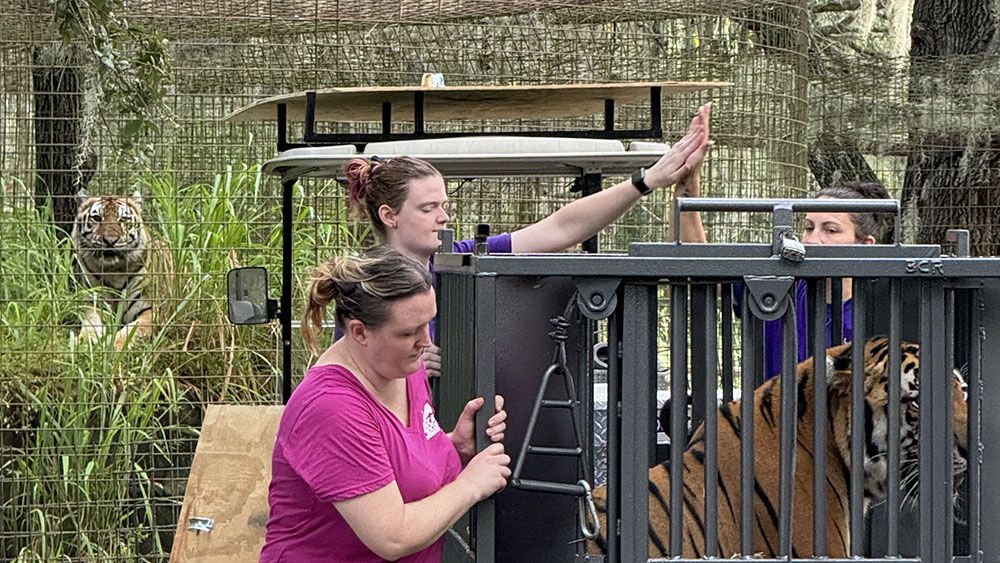
The win-win solution both for our captive cats and the cats in the wild is for us to merge our cat population with the population at another existing accredited sanctuary and devote the remaining resources of our sanctuary to the “in situ” projects being conducted around the world to avoid extinction. Turpentine Creek, like Big Cat Rescue, is accredited by the Global Federation of Animal Sanctuaries (GFAS), which has the highest standards for animal care in the sanctuary field. We have come to know Tanya and Scott Smith who operate Turpentine Creek. They and their staff are closely aligned with us in philosophy and in principles of animal care, and in recognizing the importance of advocacy to pass better laws. They were very active in helping pass the BCPSA.
When Big Cat Rescue was founded 31 years ago, the 67 acres that Big Cat Rescue occupies now was rural. Today it is surrounded by development. In contrast, Turpentine Creek sits on 450 acres in an area where expansion even beyond that is possible. Because Turpentine Creek already has the fixed infrastructure in place to house its existing 80 big cats, once enclosures are built, adding 30 or so more cats only adds the variable costs of keeper care, food, and medical care. This means donor funds are used much more efficiently by consolidating the cats at Turpentine Creek.
While that efficiency is driving this decision, it was an enormous financial undertaking by both organizations due to the need to build enclosures. We built out a 13-acre area at Turpentine Creek that included twenty-two enclosures for small cats like bobcats and servals. These enclosures are over 2000 sf each. Two enclosures for medium size cats were built, as well as fifteen enclosures for big cats like tigers that will average over 20,000 sf each. These enclosures are larger than the ones we have been able to provide at Big Cat Rescue, a benefit to the cats. Below is a diagram of the enclosures.
Big Cat Rescue’s cats occupy all of the small cat enclosures, and six of the fifteen big cat enclosures, leaving capacity at Turpentine Creek for additional big cat rescues. We have contracted for ALL of our cats to have cages there, whether we use them or not. As in the case of the medium size cat cages, which were built for Manny Jaguar and Gilligan Lynx, who did not live long enough to make the move to the Freedom Field.
Turpentine Creek has an excellent cat hospital and will have a full-time veterinarian. We are continuing to look at options for our bobcat rehab program and will update as that progresses. Winter Bobcat is the only cat to remain at Big Cat Rescue due to her health issues.
Big Cat Rescue staff who stayed until their positions no longer existed will receive twelve months of severance and a reference from Big Cat Rescue to assist in finding new positions.
Turpentine Creek is open to the public for tours, so our staff, volunteers and donors who have supported our cats can visit the cats there. Turpentine Creek is located near the quaint town of Eureka Springs which is a very popular tourist destination. Signs on our enclosures that recognize donor contributions have moved to Turpentine Creek with the cats. The construction project included installing a Wi-Fi tower to allow for Facebook lives and for Explore.org cameras so our supporters can continue to see our cats. For more information on Turpentine Creek visit turpentinecreek.org.
The threats to many species of big cat in the wild are not off in the distant future. They are very real right now. Now that we have no cats at the sanctuary, we will sell the sanctuary property and use the proceeds to fund these species-saving projects in the wild. Supporting our cats in larger enclosures at Turpentine Creek, at much lower cost per cat than we incur by continuing to operate Big Cat Rescue, has freed up resources to let us do much more to save big cats in the wild. Having ended most of the abuse of big cats via the Big Cat Public Safety Act, focusing on the third prong of our mission, i.e., maximizing the amount we can donate to in situ projects to save the cats from extinction, is the best way to fulfill our mission and impact the most cats going forward.
In the meantime, 2024 is going to be the most challenging financial year in the history of the sanctuary. The only practical way for us to make this work was for Big Cat Rescue to fund building the enclosures at Turpentine Creek that now house our cats. That cost approximately $2 million. At the same time that we have funded that construction, we had to fund the normal expenses of operating the sanctuary until the cats moved in Dec. 2023, and we still must maintain the sanctuary property until it is sold. The earliest we can expect to close on the sale is December 2024 because the developer purchasing it has to get zoning approval and permits first. We hope that the donors whose generosity has made it possible for us to accomplish so much over the last thirty one years will help us fund this transition that is a win-win in terms of supporting our cats in larger enclosures at lower cost while allowing us to do more to save big cats in the wild from extinction.
To help us fund the new homes for our cats at Turpentine Creek please visit BigCatRescue.org/TC.
Ask Me Anything with Howard and Carole Baskin about Moving Cats
What Is The Future For Big Cat Rescue?
As stated above, our plans are to use the funds from the sale of the sanctuary grounds to fund more conservation programs in the wild for exotic cats. We work with Dr. Jim Sanderson to find legitimate conservation partners who are making the biggest impacts for small wildcats. Jamie and Victor plan to travel with him to meet some of the people and organizations that we currently support and to find new opportunities to fund projects that help mitigate human / wildcat conflicts. With all of Jamie’s knowledge of running a sanctuary and a rescue, rehab and release program she can help these in-situ partners improve their efficacy.
Jamie takes great pride in the current bobcat rehab program and we are still working on how we will do that once the main property is sold. The most likely options are adding rehab capability to another sanctuary or enhancing the capabilities of an existing rehabber. When we know we will let you know.
What about our amazing donors and online, social media family? We want to stay connected to you and Turpentine Creek Wildlife Refuge has welcomed us to all gather at the Eureka Springs sanctuary every year for Feast with the Beasts. It’s a wonderful day of touring the grounds, getting demonstrations of enrichment and operant conditioning, a great meal and visiting with old and new friends. Carole plans to attend each year and hopes you will too. Reserve early to get a cabin on the grounds or across the highway at https://www.turpentinecreek.org/

While Howard Baskin looks forward to a lighter workload at his age, he will still be handling the finances, donor relationships and legal issues of the sanctuary and working closely with USFWS on enforcement of the Big Cat Public Safety Act. He has developed a very strong relationship there.
Carole Baskin has no desire to retire and will continue to advocate for the end of all forms of exotic cat abuse. Check out Cat Laws to see the most recent calls to action. Most of what we are working to end right now are circus acts that still use big cats, but we will continue to rally support for all laws that ban exotic cat abuse. Even though we fully trust Turpentine Creek Wildlife Refuge to provide excellent care for our cats, Carole and Jamie will continue to visit the cats there because these are cherished members of our family.
As for donations to Big Cat Rescue, we hope people will embrace our desire to protect wildcats from extinction before it’s too late. We have always been conscientious guardians of your donations and will continue to be. It is because of our dedication to making your money do the most good for the most cats that we are making these hard decisions.
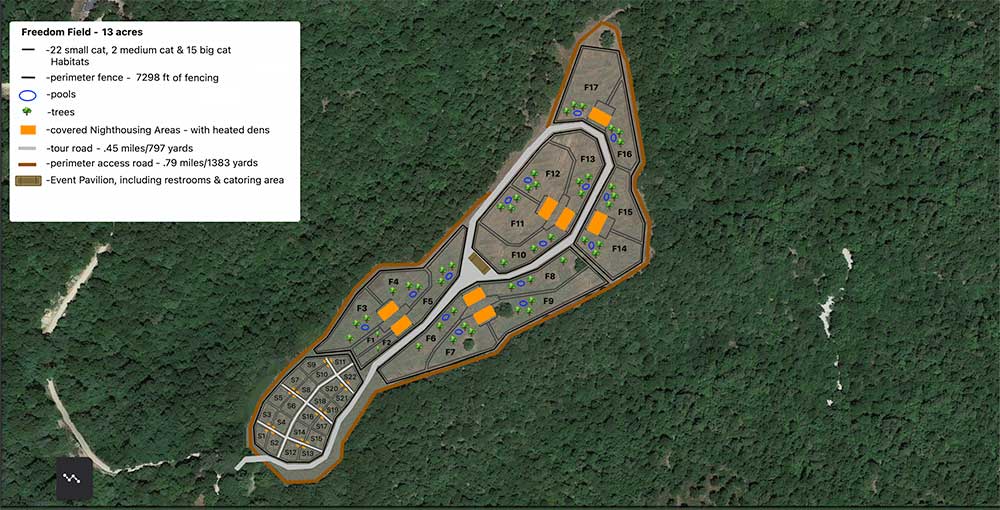
Freedom Field Construction Updates
2023/03/05 Sent the first $150,000 to TCWR to start construction on the road to the Freedom Field and throughout and around the 13+ acres on this mountain top.
2023/03/24 Signed contract between Big Cat Rescue and Turpentine Creek Wildlife Refuge whereby Big Cat Rescue committed to 1.8 million dollars to build cages and BCR will continue to provide funding for lifetime food and vet care for our cats.
2023/04/28 The Baskin’s visited the grounds, met with the staff and the Board, and saw that the porch pads have been leveled, a number of poles had been erected and materials were stockpiled for the development. All 62 trees had been planted, with irrigation tubes, and all but 1 were budding.
2023/05/16 Sent the second installment of $250,000 to the fence company that is building the cages and perimeter fencing. Many of the poles are in the ground, the power has been pulled through underground conduit, and hardware has been hung on the perimeter fence. This means the chain link perimeter fencing should be installed soon.
2023/10/26 We have now funded over $1.7 million in enclosure construction. The enclosures for our tigers are complete except for additional trees and platforms that will be added later. Our six tigers are there and enjoying roaming around their huge 20,000 sf enclosures. We expect it to take until December to finish the small cat enclosures and move the cats.
2023/12/28 All of the cats from Big Cat Rescue are now at TCWR.
See a playlist of all of the Freedom Field updates below:
FAQ’s about Turpentine Creek Wildlife Refuge answered by Tanya, President and Found of TCWR.
Questions about the weather and environmental factors in Arkansas
● Turpentine Creek is located in the Ozark Mountains, a place of all 4 seasons. With thirty years of rescue, we have very specific accommodations for our animals.
○ African Servals, Leopards, Jaguars, and other warm climate animals have
heated indoor buildings in addition to their outdoor habitats.
○ Lions have heated dens during the winter and have insulating substrate for
bedding (mulch) – and many lions actually love playing in the snow.
○ Tigers, cougars, bobcats and bears are more adapted to living in 4 seasons.
They also have insulating substrate (mulch) in the dens during the winter and all of our elderly cats have heated dens and bedding.
What about Tornados?
○ In 75 years, only 20 tornadoes have touched down in the area, only 5 being
category F2. The refuge meets with local fire and law enforcement for emergency evacuation and disaster training. There are tornado protocols in place, just like in the event of a hurricane in Tampa, FL.
Will the animals have pools?
● All of the cats have access to pools during the summer. We are currently in the progress of building more permanent concrete pools that are approximately 24’ diameter and 2-3 feet deep. If they do not have a permanent pool yet, they have a large stock tank – cleaned regularly.
Why does it look so barren? Will they have trees and plants?
● TCWR has 4 seasons. We get some snow. We get falling leaves that we pile up each day and the cats jump and play in. In the spring/summer, we get so much vegetation that we have to mow every enclosure weekly to keep up with TCWR Animal Curator’s Emily McCormack’s standards. There is actually so much vegetation in the summer that it becomes a nuisance.
● Our habitats vary between forest and grasslands. If a habitat has more open areas, we plant trees and provide shade clothes and shaded structures as required by the USDA.
We also plant tall reed grass/bamboo around the habitat areas which not only provides shade, but also acts as a natural visual barrier to provide places for the animals to hide and allows them to exhibit natural stalking behaviors.
● Many habitats also have natural rock structures built in them that give the animals places to rest on top, under, crawl through and otherwise interact. Logs and natural wood structures are provided for them to climb on, interact with and display natural scratching
and rubbing behaviors.
What do you feed your animals?
● Our carnivores get a variety of poultry products as well as beef, whole carcass rabbit, and zoo recommended Triple A or Nebraska Meat.
● All of the animals are also provided with the necessary vitamins, nutraceuticals or dietary supplements as determined by our veterinarian and animal curator.
● Every animals diet is individually prepared and weighed out and anything not eaten is diligently recorded so we have accurate accounts of what each individual cat is consuming daily.
● The dietary needs of the animals are closely monitored and diets are accessed and adjusted on a regular schedule by our veterinarian, curator and animal care commissary manager.
● Our bears get protein as well as fresh produce and fruit from the food purveyor in our area Ben Keith which we purchase. They are also provided with additional options (bread, eggs, popcorn, raisins, bread, canned fruit, peanut butter) in ‘fun dishes’ to provide them with more interesting options.
Toys and Enrichment questions
● TCWR has 2 entire sheds on their property to hold the enrichment items that range from cardboard boxes, spices, perfumes, burlap bags, etc.
● There is an ‘enrichment garden’ on our property where we grow aromatic herbs and spices which are picked and given to the animals – this includes various varieties of catnip, basil, cilantro, etc.
● The cats are provided with toys that are specifically designed for exotic animals and purchased through Boomer Ball or Wildlife Toy box (among other companies).
● Seasonally they are given pumpkins, watermelons and Christmas trees. Toys and structures are also made from fire hose or pvc pipe. The animal care team is always researching and learning about unique and innovative enrichment options for the big cats.
● The cats have been given bubbles in their pools during the summer and some of the animals are part of our behavioral training program.
● The animal care staff has an enrichment coordinator that organizes and manages the enrichment program which includes diligent record keeping of all enrichment activities and the cats individual reactions.
● Please visit our enrichment page on our website for more information.
What does TCWR do about COVID, Tigers can get COVID?
● COVID vaccines are required for all animal care staff and regular mask wearing continues in any animal areas. When doing vet procedures, where animal care staff is in much closer proximity to the cats KN95 are worn.
● Guests are required to follow the COVID guidelines, including wearing masks in specific areas and/or stricter policies given the event of an outbreak.
● Some of our cats have received the Zoetic COVID Vaccine for Animals.
Will we be able to see the BCR cats when we visit? Do they have tours?
● The cats from Big Cat Rescue will be living in habitats on Freedom Field, which is currently being built. This construction includes a road for our tour tram and there are plans to conduct tours to the area after completion.
● TCWR has a variety of different types of tours and Freedom Field will be integrated into these tour options.
Veterinary Medicine
● Turpentine Creek has a state of the art veterinary clinic onsite. Built in 2016, it is equipped with state-of-the-art veterinary equipment and supplies.
● Our on-staff veterinarian, Dr. Kellyn started as an intern, was hired on as a permanent Animal Care Staff. She left to attend vet school in order to help the animals at TCWR even more and in 2018 come back as TCWR staff veterinarian.
● In more complicated cases we have consulted with other K-state as well as other universities and veterinarians and Dr. Kellyn continually researches, attends seminars, conferences and continuing education to stay abreast of the latest developments and practices in exotic zoo medicine.
● We have participated in scientific research studies and have been consulted by the top zoos and animal facilities in the United States and globally.
● Our veterinary practices are groundbreaking, including the first successful treatment of a hemangiosarcoma cancer through chemotherapy and the diagnosis and treatment of the first documented case of congenital flexural tendon contracture (an extreme deformity of the limbs) in tigers. This condition was from the inbreeding at Tiger King Park and is explained in our documentary “Uncharted.”
Animal Care Staff – what makes them qualified?
● All our animal care interns must have a B.Sc. degree in biology, zoology or animal related discipline from an accredited university.
● The animal care staff members are hired from our intern program. They have completed multiple internships and displayed exemplary skills in leadership, safety and overall animal husbandry.
● Our president and founder’s family have a combined experience of a century.
● Our animal curator and assistant animal curator both have close to 25 years experience with the big cats at TCWR. The rest of the team has at least 3 years with one being at the refuge over 10 years and another over 7 years.
● The Animal Care Department takes meticulous records of our animals, including daily notes on the cats physical health, medications, behavioral changes, enrichment and more.
● Our animal care staff and interns live onsite so that they can respond to emergency situations and maximize animal welfare and husbandry for the animals.
● All of us have learned and continue to teach what we learn to improve the constant and continued improved care for our animals.




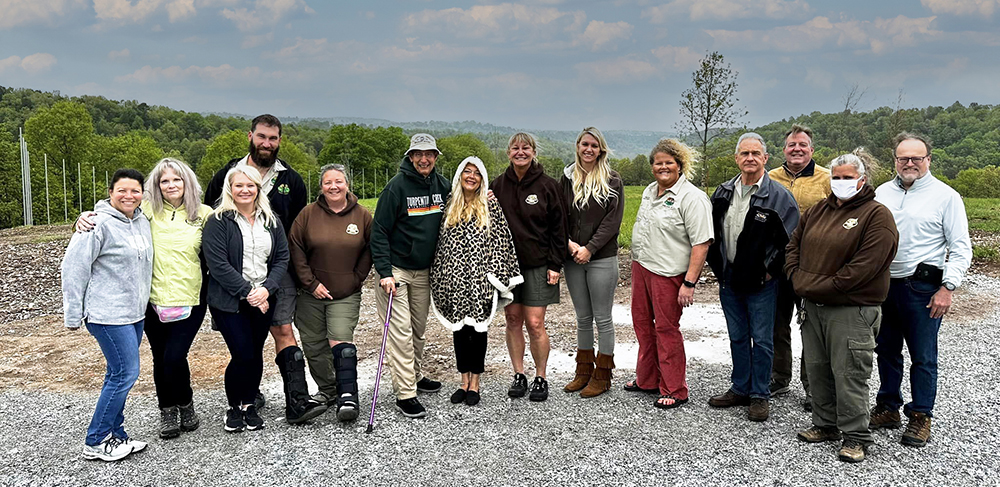
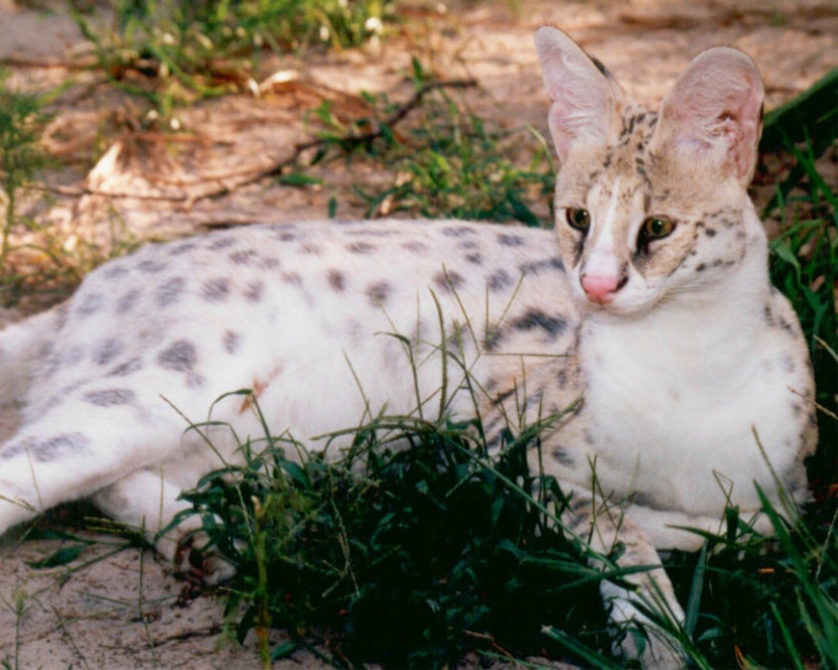

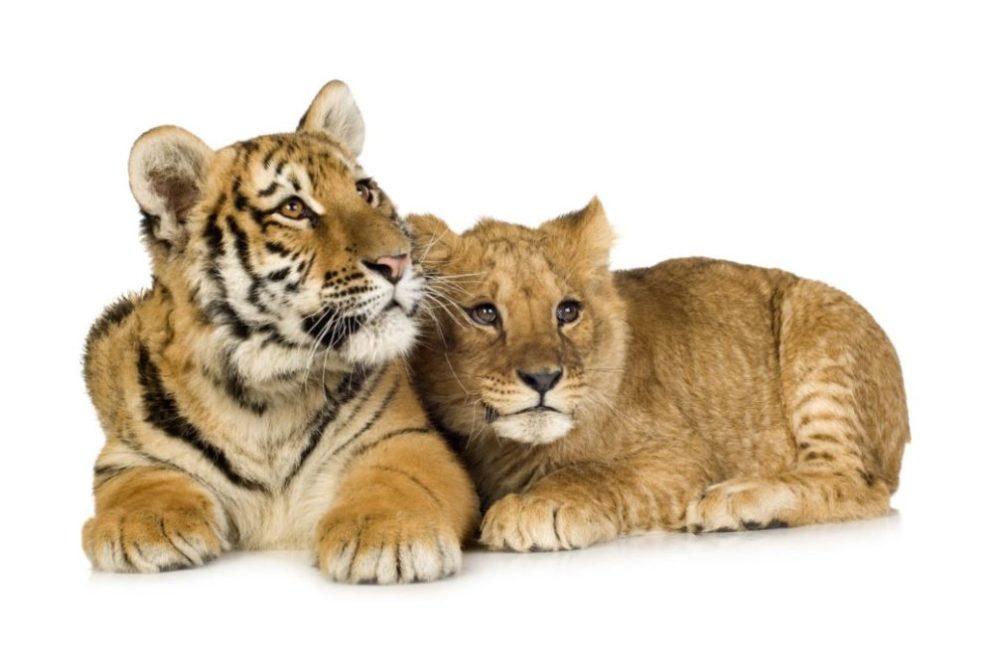
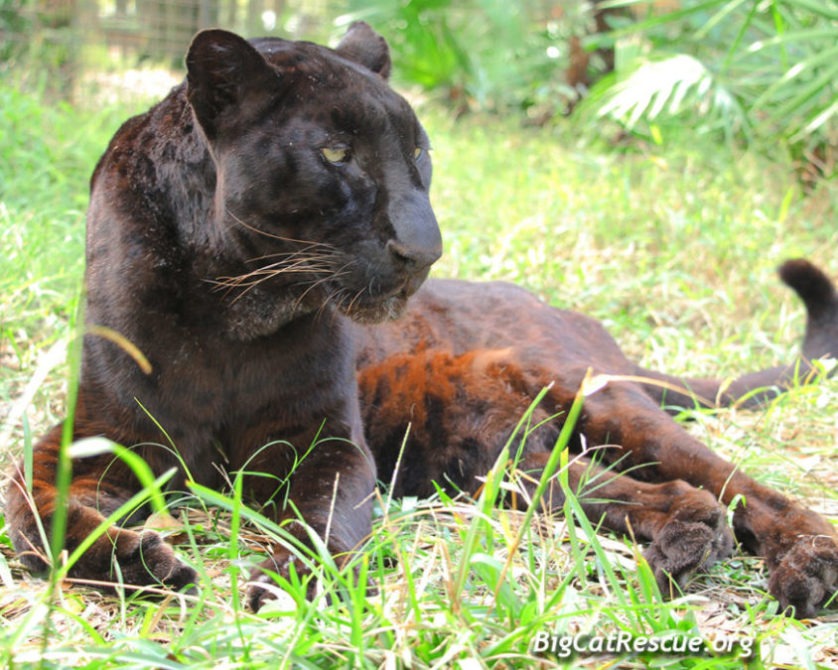
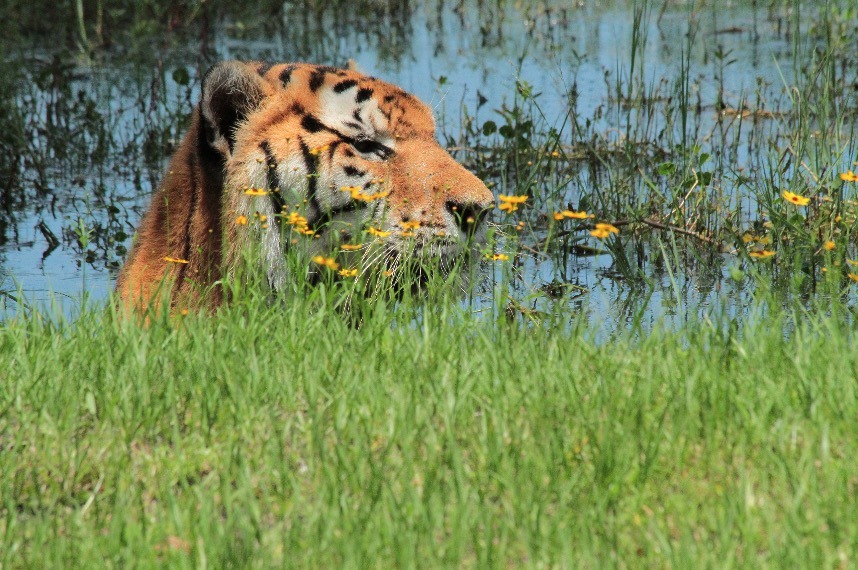

Hello! This is all so incredible. To have followed through on the vision/mission is so amazing. I know now we have to work on the cats in the wild but I am so inspired to get this far. I drive by Easy St frequently and am so happy to know everyone has moved to their new homes. God bless you for caring so much about animals. What a priority I feel they are. This update has made my day and I will make a donation to help you through this important transition.
I’m so happy the big cats are being well taken care of and have bigger spaces, etc.
What are the plans for the domestic cats and kittens that lived with you until adoption? They need food, water, and care as well!
We stopped the foster program in 2020 when COVID hit and everyone who had pet cats here has taken them home.
Do you still take empty ink cartridges for recycling? I have a bunch of the poly mailers.
No we are not a part of that program any longer.
What will happen to my unused feeding tour certificate? Will my money be refunded?
Contact info@bigcatrescue.org
I thank you for the years you all have strived to give the cats the best life..My favorite that I will miss is seeing your posts and the cats going on vacation……
Was Jinix still alive? I wondered why I wasn’t seeing anything on fb. I’m so glad all the cats have a new home and the work will continue. I’ll miss seeing posts from BCR! I’m hope turpentine creek will have a web site.
I first visited BCR when it was Wildlife on Easy Street in Tampa, since then, I made a point of visiting BCR every time I was vacationing in Florida. Often we would take visiting friends, and we always had a great time. Possibly my favourite visit was celebrating a wedding anniversary by staying overnight in the Sanctuary (and making the acquaintance of one of the freeloading kitties, a delightfully friendly tabby!). While I appreciate the need for the move, which will certainly benefit the more elderly animals, I shall be sorry to say farewell to BCR.
I may never be able to visit Turpentine Creek, I wish you well for the future and that of the cats.
Terri Beckett, North Wales, UK.
What will happen to the donation bricks with name# of donors? Will they be moved as well?
Donor signs were moved to go with the cats. We don’t know what we will do about the bricks. Email Howard.Baskin@BigCatRescue.org if you want yours back.
Thank you seems so small in light of all you do.
I am so impressed with the clarity of vision and follow through. I pray for wisdom, and God’s provision and protection for all animals and staff. The word says that God gave us dominion over the animals, fish and birds. Also that he is concerned about what concerns us. I went back to school to finish my degree in Animal Science in Veterinary Nursing at 40. I’m in such admiration of what you guys have accomplished for the animals. Your vision was written on the wall! Blessings Thank you again!
Extremely impressed with the 2 sanctuaries combining to ensure a safe place for the big cat’s 👏 was a supporter of Tiger Creek for years & Tiger Heaven
Several years ago, I was working in the Tampa area, and spent the day at Big Cat Sanctuary. I still have the huge towel I bought there and a shirt with big cats and your logo on them. I will keep them as long as I live as I so enjoyed my time there. You had just rescued a young tiger and he was adorable, I will always remember that.
I’m so glad that the cats are all going to such a wonderful furrever home!
What will happen with the current sanctuary in Florida? Will it be sold to help raise funds for the new location?
You can find all of that information in the statement at BigCatRescue.org/moving
What will happen to the walls / ashes of all the cats that have passed away? You may not have decided or come to any decision yet, but that was one of the first things that came to mind. Thank you <3
We are working on a ceremony to spread their ashes at Turpentine Creek.
What will happen with the caracals, Chaos and Cyrus will they move as well?
Thank you for all of your hard work and incredibly care that you have provided to all of these wonderful creatures over the years.
I have enjoyed a few wonderful tours at BCR and each one provided us with more information, knowledge, wisdom and explained how we can help not only the cats at BCR but also the wild cats.
Yes
Can you share with us what will be happening with the keepers, staff and volunteers? Part of the investment we have with BCR is with the wonderful group of people.
Staff who stay until their positions no longer exist will receive twelve months of severance and a reference from Big Cat Rescue to assist in finding new positions.
Thank you!